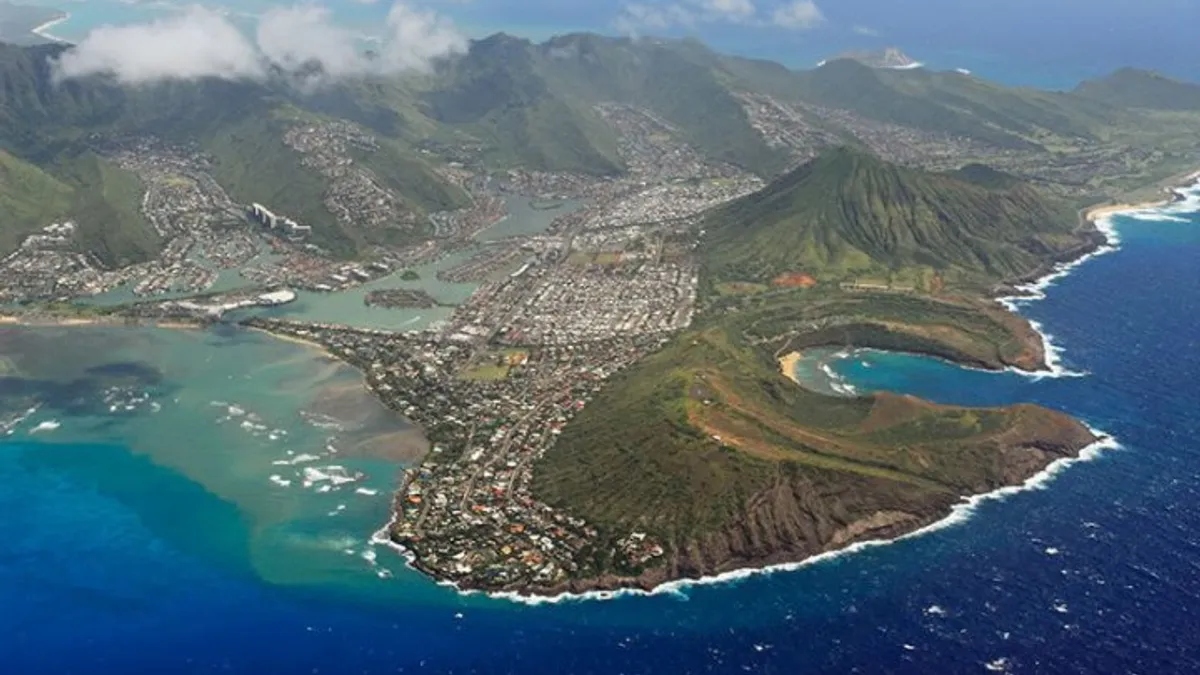Dive Brief:
- Hawaiian Electric wants to add a further 1,378 MWh of storage and the equivalent of 135 MW of solar generation to its grid by 2022 to compensate for the scheduled closure of two fossil-fuel power plants and to bring the state one step closer to its 100% renewable energy goal.
- The Honolulu-based utility said it has submitted drafts of its second phase request for proposals (RFPs) to the Hawaii Public Utilities Commission for review and approval. HECO expects to issue the final RFP by June, with the first projects expected to come online in 2022, subject to approval.
- The scheduled shutdowns of the coal-burning AES Hawaii power plant on Oahu and Maui's oil-fired Kahului Power Plant will take close to 220 MW of firm power generation offline by 2024.
Dive Insight:
In 2015, Hawaii became the first state in the country to pass a 100% renewable energy bill. The legislation requires investor-owned utility company Hawaiian Electric to achieve a renewable portfolio standard (RPS) of 100% by 2045.
For 2018, the utility reported a consolidated RPS figure of 27%, three percentage points shy of the next mandated RPS milestone — 30% by 2020.
To achieve this next milestone and accelerate the state's transition toward 100% renewable energy, HECO last year embarked on an ambitious procurement plan and recently unveiled details surrounding its next phase.
On April 3, the utility provided an overview of the second phase of its procurement plan. According to a company statement, HECO wants to add 295 GWh of renewable generation and 1,378 MWh of storage across three islands. The renewable generation component is equivalent to 135 MW of solar generation, the utility said.
The second phase solicitations will be open to all renewable energy and storage resources, including solar and wind generation, renewables plus storage, standalone storage and grid services, the utility said.
The second phase builds on last year's first phase during whereby the utility negotiated contracts for eight projects across its service territory. Five of the eight projects have already received PUC approval and will add a combined 247 MW of solar energy along with nearly 1 GWh of storage by the end of 2021.
"With projects in operation, under construction and in the works (including phase one and two RFPs), we are confident of exceeding the 2020 milestone of 30% and far exceeding the 2030 milestone of 40%. This reflects our Power Supply Improvement Plan which envisions, if all goes well, meeting the RPS mandate of 100% earlier than 2045," Peter Rosegg, Hawaiian Electric spokesman, told Utility Dive.
The addition of renewable and storage resources can't come soon enough for Hawaiian Electric, which plans to close a couple of fossil-fuel plants in the near future.
The 180 MW coal-fired AES Hawaii plant, planned for closure in September 2022, is the largest single generator on HECO's system, meeting 16% of Oahu's peak demand, according to the utility. On Maui, the 37.4 MW Kahului Power Plant is earmarked for retirement in 2024.
In addition to generation and storage, the utility said it will seek independent service providers to enlist customers to provide grid services.
"Such contractors, known as aggregators, utilize customer-sited distributed energy resource such as water heaters, distributed generation, batteries and electric vehicle charging to deliver the required grid services back to the utility," HECO's statement said.
Participating customers will receive incentives in the form of a bill credit, while contractors will receive compensation in the form management and enablement fees.
"For the utility, the challenge is keeping the grid stable and reliable. The second phase renewable RFP seeks the megawatts and megawatt-hour service capabilities of the fossil fuel plants to be replaced. Grid services are part of the present RFP to help reduce and move customer demand," Rosegg said.














